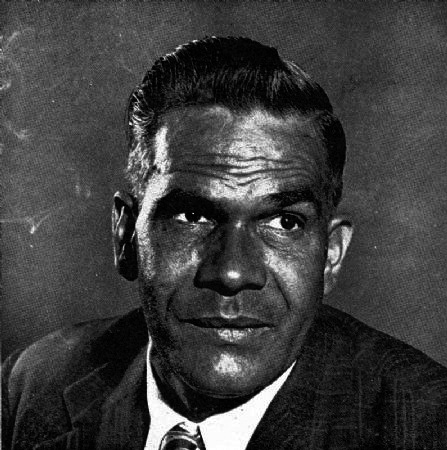 Heroes in The Struggle for Justice Heroes in The Struggle for Justice Important People in the Political Struggle for Aboriginal Rights
| ||||
 |
||||
|
Bert Groves This article was published in Australian Dictionary of Biography, Volume 14, (MUP), 1996 Herbert Stanley (Bert) Groves (1907-1970), Aboriginal activist, was born on 4 February 1907 at Walhallow (Caroona) Aboriginal station, near Quirindi, New South Wales, son of Robert William Groves, a respected Aboriginal shearer, and his wife Alice Jane, née Fox. Alice was a Kamilaroi from Toomelah on the Castlereagh River who had been raised at Walhallow. As a child, Bert lived at Gulargambone and often travelled with his family in the north-west of the State where his father found work. Bert intermittently attended Coonamble Public School, attaining fifth-grade standard; through avid reading and self-education he became highly literate and articulate. In 1923 Groves was apprenticed to a plumber, but found it difficult to obtain jobs. For a while he worked a horse scoop on the construction of the Dubbo to Werris Creek railway. In 1927 he was engaged by the Aborigines Protection Board as handyman on Bulgandramine Aboriginal reserve. About this time he met William Ferguson who was seeking support for his campaign against the oppressive policies of the A.P.B. Soon afterwards Groves returned with his young wife Susan Mary Cain, née Marney (d.1967), to the Walhallow reserve as handyman. One of his major tasks was to maintain the pump, windmill and water-supply. Groves enjoyed his time there, and had good relationships with the manager and staff. He took an interest in the health and education of the children at Walhallow Aboriginal School and became president of the parents' and citizens' association. Agreeing to Ferguson's request to gather information about discrimination and racism, he sought and gained employment as the handyman at Aboriginal reserves (Angledool, Brewarrina and Toomelah) in the north-west; he then moved to Pilliga where the A.P.B. had a timber-mill and was using cheap Aboriginal labour. Dismissed from the board's service for chairing a meeting of the Pilliga branch of the Aborigines Progressive Association (formed by Ferguson in 1937), Groves found work as a truck driver at Coonabarabran. He enlisted in the Australian Imperial Force on 14 April 1943 and served in Australia. After his discharge on 26 January 1945, he settled in Sydney. He worked as a plumber at Rhodes before being employed by the Public Service Board, at Parliament House. For the rest of his life, however, his real 'work' was Aboriginal advancement. He was prominent in a demonstration against a South Australian pastoralist who had been fined £135 for keeping Aborigines in chains in 1946, and he opposed the establishment of a rocket-range in Central Australia. As a part-time member (1950-54) of the Aborigines Welfare Board, he fought hard to improve the conditions in which Aborigines lived on government stations and reserves throughout the State. In 1952 he was appointed a justice of the peace. An accomplished speaker, he was frequently invited to address church and service organizations on Aboriginal issues, and helped in leadership training courses run by the Department of Tutorial Classes at the University of Sydney. In 1956 Groves became first president of the Aboriginal-Australian Fellowship (formed in Sydney to bring together Aborigines and Whites); in 1958 he was a founding member of the Federal Council for Aboriginal Advancement. He was president (from 1963) of the revitalized Aborigines Progressive Association and also worked for the Foundation for Aboriginal Affairs. As a trustee of the Aboriginal Children's Advancement Society, he was tireless in fund-raising efforts to build for children the Kirinari hostel at Sylvania Heights and hostels at Newcastle and Manly. The success of the campaign for the 1967 referendum which gave the Commonwealth government power to legislate on Aboriginal matters was a major victory for Groves. He chaired the breakaway section of the Federal Council for the Advancement of Aborigines and Torres Strait Islanders in 1970 when some Aborigines decided to form their own organization, the National Tribal Council. The N.T.C. gave him the Aboriginal name 'Boodjree Be Angar Goolee' (responsible person). At Tranby Chapel, Glebe, on 7 June 1969 Groves married 21-year-old, German-born Renate Sofia Schieron. Survived by his wife and their two infants, and by three sons and two daughters by his first wife, he died of myocardial infarction on 28 December 1970 in Bankstown hospital and was buried with Methodist forms in Woronora cemetery.
Select Bibliography Further Reading
| ||||